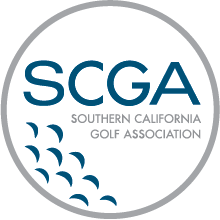Course Rating History
The USGA adopted SLOPE into the USGA Course Rating System in 1987, to address handicap portability issues. SLOPE adjusts a player’s Handicap Index according to the difficulty of the golf course and the tees being played, making it possible for golfers to travel with their handicap and compete fairly at any golf course.
In 1971, the SCGA’s own William Wehnes developed the first obstacle rating procedure. This method used plus-minus adjustments for a number of course obstacles and the SCGA employed it until 1997.
Most of today’s rating system can be attributed to Dean Knuth. He proposed a rating procedure that provided a numerical rating of 10 characteristics for each hole. These ratings, along with the weighted factors for each characteristic, provided an adjustment to the distance and rating of the course. The basis of this system was used to create the current USGA Course Rating System.
The USGA established a USGA Course Rating Subcommittee in 1987, which includes golf association staff and volunteers interested in the policies of the USGA Course Rating System. The committee meets annually to discuss modifications to the system and conducts national course rating calibration seminars for all associations and foreign countries licensed to use the system.

